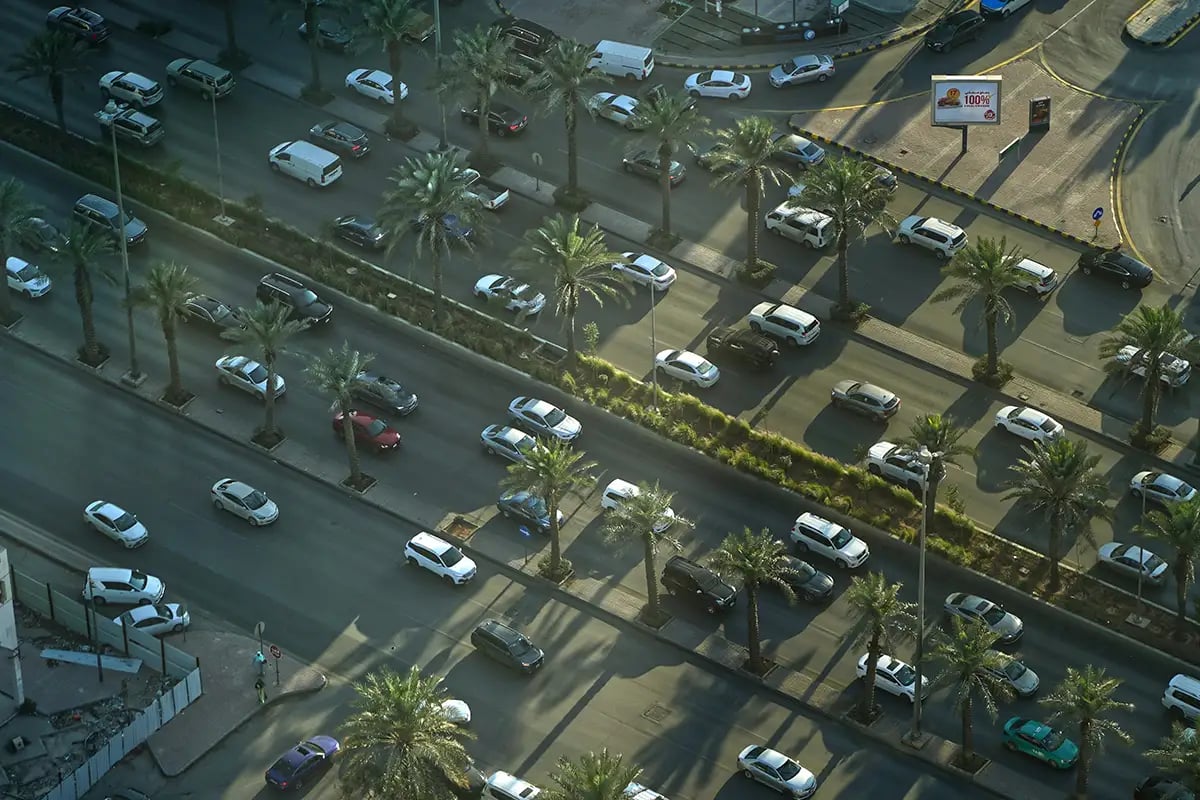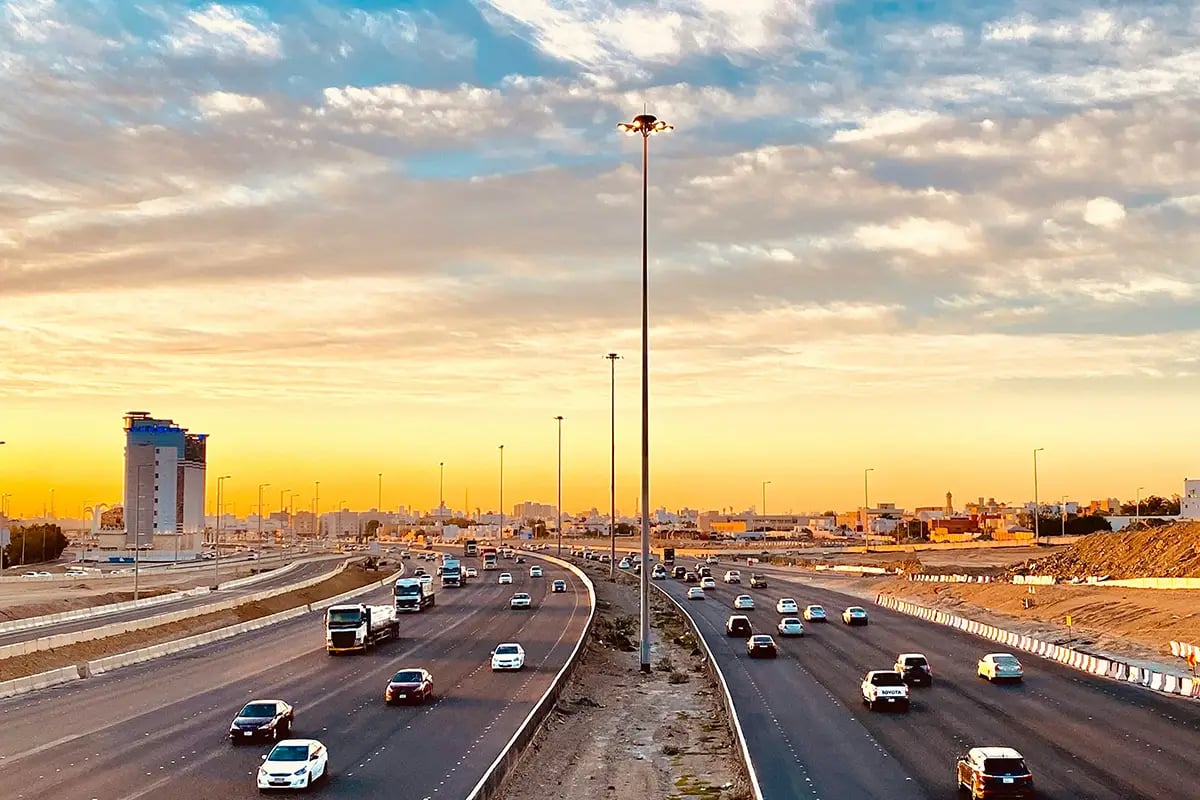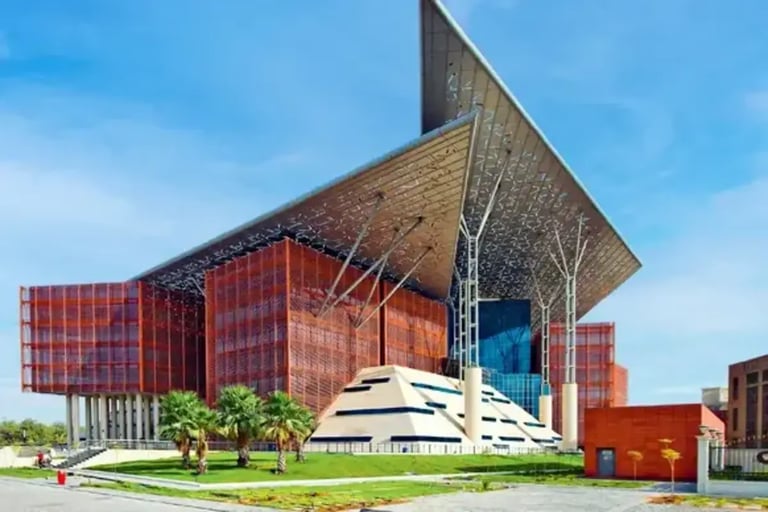Gulf Arab states, led by the UAE and Saudi Arabia, have witnessed a modest rise in electric vehicle (EV) adoption as they develop infrastructure to support a move away from internal combustion engines. Urbanization and economic growth have led to a rise in emissions from the transportation sector, making decarbonization an imperative in the drive to net zero carbon emissions.
Both countries are investing in electrifying transportation, with initiatives such as Dubai’s driverless metro and Saudi Arabia’s railway and metro links. However, challenges including extreme summer temperatures and the need for massive investment in charging infrastructure remain.
Impact on oil consumption and electricity demand
A report by the King Abdullah Petroleum Studies and Research Center (KAPSARC) examines the expected growth in EV sales in Saudi Arabia and their impact on oil consumption, carbon dioxide (CO2) emissions and electricity demand. Oil demand in the kingdom’s transportation sector peaked in 2015 but declined due to domestic fuel price adjustments and improved efficiency. However, demand is expected to recover as economic development has led to the expansion of cities and highway networks, contributing to the increase in demand for vehicles, according to the report.
The report states that the kingdom ranks ninth in the world in gasoline consumption, and fourth in terms of per capita consumption of gasoline. The rapid rise in demand for oil and the continued increase in the number of vehicles in use have raised concerns about future oil exports, energy consumption and greenhouse gas emissions, the report adds. Mega projects in the kingdom such as NEOM, the Red Sea Project, Qiddiya, and Diriyah Gate, are expected to significantly impact demand for oil in the transportation sector.
These projects are part of the Saudi Vision 2030 initiative, which aims to diversify the economy, reduce dependence on oil, and boost tourism and investment. The study predicts that the number of Internal Combustion Engine (ICE) vehicles in Saudi Arabia will reach 29.6 million by 2050, 2.5 times the 2023 level. Under a business-as-usual scenario, it is anticipated that demand for oil for transportation would reach 67 million tons of oil equivalent (TOE) by 2050. However, with high penetration of EVs, consumption could be cut by 20.2 percent, which would result in savings of 13.5 million TOE.
Read: Middle East Energy 2025 in Dubai spotlights energy storage and battery technology
EV market share on track for growth
The KAPSARC report uses three scenarios for EV adoption: Low growth: 14.8 million EVs by 2050; moderate growth: 17.8 million EVs by 2050, and high growth: 20.7 million EVs by 2050.EVs would require 47.7 terawatt-hours (TWh) annually in the high growth scenario, 38.2 TWh in the moderate scenario, and 28.6 TWh in the low growth scenario. The business-as-usual scenario projects 198 million tons of CO2 emissions by 2050 but dropping to 158 million tons in the high EV growth scenario.
While EV penetration remains low compared to traditional gasoline and diesel vehicles, the government aims to increase their market share significantly by 2030. Initiatives such as the Red Sea Project have introduced fleets of electric vehicles, including models from Lucid Motors, in which Saudi Arabia’s Public Investment Fund (PIF) holds a significant stake. Lucid began producing EVs from a facility in the King Abdullah Economic City in 2023 which has an initial capacity of 5,000 units/year, with plans to expand to 155,000 as it establishes supply chains to support wider EV penetration.
In January, Saudi Aramco signed a preliminary agreement with fellow state-backed firm Ma’aden to form a new “transition minerals JV.” The joint venture will have a particular focus on lithium, with an eye on beginning commercial production by 2027.
The kingdom expects global lithium demand to increase seven-fold by 2030 versus 2022 levels, and the JV partners say their operations will help meet an anticipated twenty-fold increase in domestic demand for lithium between 2024 and 2030, “supporting an estimated 500,000 electric vehicle batteries and 110 gigawatts of renewables.”
Despite its ambition, the wider adoption of EVs in Saudi Arabia will take time. EVs are still more expensive than conventional cars due to battery costs, limited local production and insufficient public and private charging stations, the KAPSARC report says. Riyadh plans to install solar and wind-powered charging stations.
However, scaling up these stations and modernizing the electricity grid are necessary to meet increased demand from electric mobility. The kingdom is proceeding swiftly with the addition of renewable energy capacity, which is set to nearly double to 12.7GW by the end of 2025. Riyadh plans to spend an estimated $270 billion to modernize and expand the national electricity grid.

Region-wide EV initiatives growing
The UAE also has ambitious plans to decarbonize transportation, aiming for a 50 percent share of EVs in total car sales by 2050, which would contribute to a 40 percent reduction in energy consumption in the sector. Abu Dhabi is also working on reducing emissions from the transportation sector by 20 percent by 2035. Alongside the EV mandates, the UAE has adopted a national biofuel policy to enhance competitiveness and reduce transportation emissions.
Oman is also actively pursuing the decarbonization of its transportation sector as part of its broader commitment to achieving net-zero by 2050. In November 2024, Oman launched the “Net Zero 3” initiative, which encompasses 36 projects specifically targeting the transportation sector. The aim is a 3 percent reduction in transportation-related emissions by 2030, and an additional 34 percent reduction by 2040.
The transportation sector is a significant contributor to the nation’s greenhouse gas emissions, accounting for approximately 18 percent of Oman’s total emissions in 2021, with passenger cars making up about 60 percent of that figure. The government is incentivizing EV adoption through tax reductions, subsidies, and the development of charging infrastructure. Efforts are also underway to transition the public sector fleet to electric vehicles.
The sultanate is developing a green hydrogen industry and is considering the use of hydrogen as a sustainable alternative for heavy-duty transportation. It is also exploring production and use of biofuels derived from local organic sources to reduce dependence on fossil fuels and support local industries. But Oman faces challenges such as the historical prevalence of fuel subsidies, which tend to encourage high consumption.
While the Gulf Arab states are making significant strides towards electrifying transportation and reducing emissions, the journey is fraught with challenges. Massive investments in infrastructure and policy support are needed if Gulf countries are to achieve their goals.
For more features, click here








